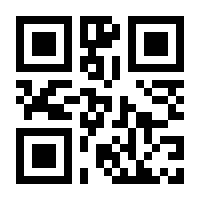
×
![Buchcover ISBN 9780471369967]()
This is an excellent textbook for an advanced course in biostatsitics and also an indispensable reference for biostatisticians and epidemiologists. what makes this textbook so valuable is that it covers the core methods first using classical statistical tools and then likelihood-based theories, highlighting the continuities. Another important feature is the care and balance with which it is drafted: the reasoning is always clear, the mathematical presentation detailed but to thepoint, the examples linked across different chapters. (Short Book Reviews, Vol. 20, No. 3, December 2000)„. an excellent guide for graduate-level students in biostatistics and invaluable reference for biostatisticians, applied statisticians, and epidemiologists.“ (Mathematical Reviews, Issue 2001h)„. does a very thorough job of establishing a sound bias for the use of biostatistical methodology.“ (Technometrics, February 2002)„. an excellent guide for graduate-level students in biostatistics and an invaluable reference for biostatisticians, applied statisticians, and epidemiologists.“ (Zentralblatt MATH, Vol. 961, 2001/11)„the book is an excellent guide“ (Zentralblatt MATH, Vol.961, No.11 2001) „. an excellent guide for graduate-level students in biostatistics and invaluable reference for biostatisticians, applied statisticians, and epidemiologists.“ (Mathematical Reviews, Issue 2001h)„. does a very thorough job of establishing a sound bias for the use of biostatistical methodology.“ (Technometrics, February 2002)„. an excellent guide for graduate-level students in biostatistics and an invaluable reference for biostatisticians, applied statisticians, and epidemiologists.“ (Zentralblatt MATH, Vol. 961, 2001/11)„the book is an excellent guide“ (Zentralblatt MATH, Vol.961, No.11 2001)
Comprehensive coverage of classical and modern methods of biostatistics
Biostatistical Methods focuses on the assessment of risks and relative risks on the basis of clinical investigations. It develops basic concepts and derives biostatistical methods through both the application of classical mathematical statistical tools and more modern likelihood-based theories.
The first half of the book presents methods for the analysis of single and multiple 2x2 tables for cross-sectional, prospective, and retrospective (case-control) sampling, with and without matching using fixed and two-stage random effects models. The text then moves on to present a more modern likelihood- or model-based approach, which includes unconditional and conditional logistic regression; the analysis of count data and the Poisson regression model; and the analysis of event time data, including the proportional hazards and multiplicative intensity models. The book contains a technical appendix that presents the core mathematical statistical theory used for the development of classical and modern statistical methods. Biostatistical Methods: The Assessment of Relative Risks:
Supplemented with numerous graphs, charts, and tables as well as a Web site for larger data sets and exercises, Biostatistical Methods: The Assessment of Relative Risks is an excellent guide for graduate-level students in biostatistics and an invaluable reference for biostatisticians, applied statisticians, and epidemiologists.
Biostatistical Methods focuses on the assessment of risks and relative risks on the basis of clinical investigations. It develops basic concepts and derives biostatistical methods through both the application of classical mathematical statistical tools and more modern likelihood-based theories.
The first half of the book presents methods for the analysis of single and multiple 2x2 tables for cross-sectional, prospective, and retrospective (case-control) sampling, with and without matching using fixed and two-stage random effects models. The text then moves on to present a more modern likelihood- or model-based approach, which includes unconditional and conditional logistic regression; the analysis of count data and the Poisson regression model; and the analysis of event time data, including the proportional hazards and multiplicative intensity models. The book contains a technical appendix that presents the core mathematical statistical theory used for the development of classical and modern statistical methods. Biostatistical Methods: The Assessment of Relative Risks:
Supplemented with numerous graphs, charts, and tables as well as a Web site for larger data sets and exercises, Biostatistical Methods: The Assessment of Relative Risks is an excellent guide for graduate-level students in biostatistics and an invaluable reference for biostatisticians, applied statisticians, and epidemiologists.


